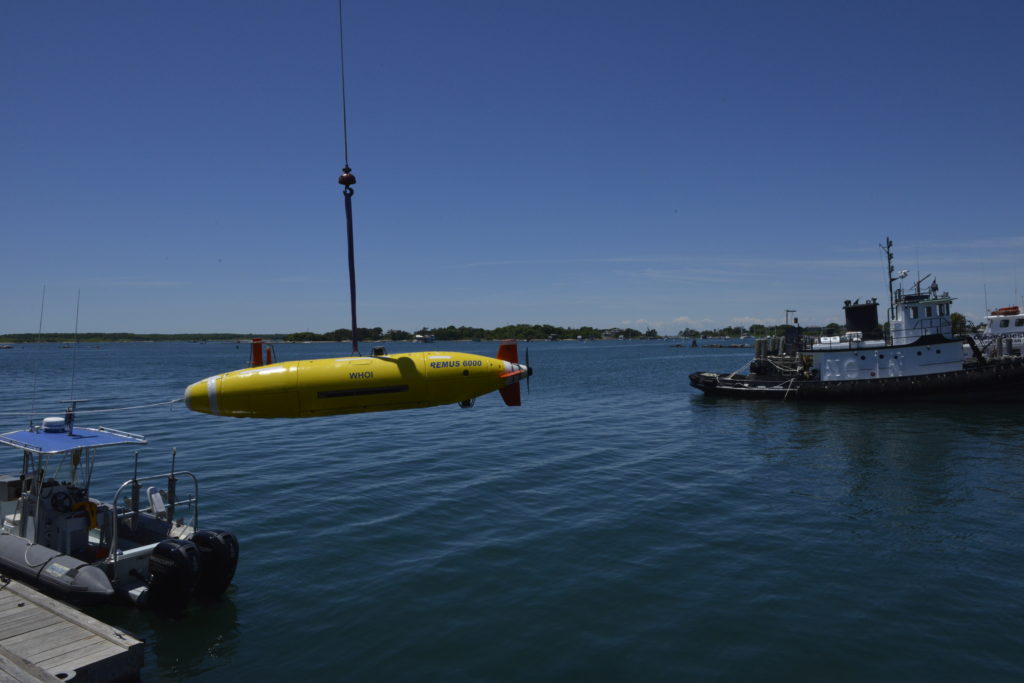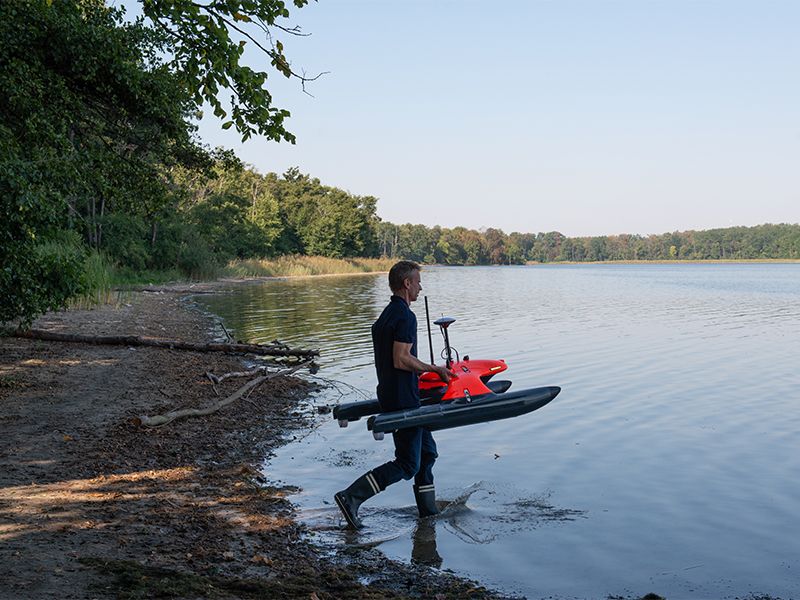As we discuss in our ongoing 3D Printing Drone Swarms series, additive manufacturing (AM) will play an increasing role in the production of all manner of semi-sentient robots. This has been demonstrated by unmanned aerial vehicles (UAVs), which are now being made in part with 3D printing for lightweight, custom designs. For this reason, we expect AM to be used for other drone-style bots as well, often for military purposes. We are also not advocating for the use of 3D printing for the manufacturing of weapons or military equipment, but are highlighting this as a likely inevitability.
If we’re assuming that a drone revolution will also come to submarine warfare, then the nature of war at sea will change. Relatively simple vessels that are also quite small will come to the fore. Without the need to carry human crew, the form factor and designs of these craft will be radically different. Much simpler to model and improve, they will make use of 3D printed components to optimize weight. The most advantageous heatsinks and Sterling could be used, in part, for power. Buoyancy could also, in part, be used for propulsion. Scavenger subs could be simple, inexpensive, and use buoyancy and solar power to remain at sea for months.

The Remus.
New roles could be defined and new vessels could be made. This might include small tracker vehicles that permanently shadow all enemy ships or simple sea mines that lie in wait on the sea floor, kilometers below, to be awoken when needed. Swarms of inexpensive mini speedboats might patrol harbors and encircle friendly ships, ready to absorb a torpedo or ram an intruder.
In the future, there will be fewer buffalo and more flies. Rather than build a $13-billion aircraft carrier, you’d 3D print 130,000 subs, each at a cost of $100,000. Their hulls would be made with composites. Unique shapes would reduce radar and sonar cross sections. Batteries or air-independent propulsion (AIP) would provide drive, enough to remain under water for a month while solar power might extend life.
With no need for food or water, time at sea would be radically extended. With no people aboard, vessels would be more expendable and could be deployed more adventurously. Maybe they would look like jellyfish or like modified torpedoes. They might enter enemy rivers, harbors, and formerly denied areas. Rather than “carry a big stick”, it would be like “concealed carry for the sea.”
It would be more difficult to publicly project power but harder for your enemies to sleep well at night. Leadership wouldn’t have to worry about risking 6,000 lives aboard a carrier In a dangerous area. Flare ups would be more likely. At the same time, rules of engagement could be relaxed. With no worry about losing friendlies aboard your vessel, you don’t have to blow up an approaching fishing boat thinking that it may be an assault as a matter of precaution. You could risk the ship to protect others, as well.

Evologics Sonobot shows that tiny form factors are possible.
Craft would wash up here and there. The enemy would get a hold of them periodically. You’d perennially be losing them and finding them, like change in a couch. But, it would only take weeks to improve it. True iterative engineering would see the continual improvement of these subs. With hundreds of firms making subsea remotely operated vehicles, seabed scanners, and small sea vehicles there would be a plethora of suppliers all working against the same standards. This would hopefully see more competition, better pricing, and more innovation. The carrier group is dead. Welcome to teeny-tiny wolf packs everywhere.
A country like the U.S. could develop mobile nets of randomly placed and moving persistent surveillance and undersea fields of mobile sea mines in wait. Swarms of drones would be on standby beneath trouble spots. And you’d have an Always-on Navy. Response times would be diminished. You could even airdrop your submarines to hot zones in just hours if need be. However, most of the time, they would already be there. Alternatively, C5s could carry them quickly to friendly harbors near trouble spots, as well. You would be able to credibly respond in hours rather than days. in case of a looming war, an area would be overwhelmed with thousands of drone subs in hours, tens of thousands in days.

The SeaCat can swap heads to take on different missions.
There would simply be too many for them to target, too many for them to find. If they missed just ten out of 50,000 then they would be frozen in aspic unable to risk the loss of their carrier. Every vessel of theirs, every friendly oil tanker would be shadowed, slated for possible destruction. They would simply not have the resources to be everywhere at the same time. If they have 300 ships, you could cause 3,000 incidents at the same exact moment in 3,000 different places with ten subs at each incident. Still, you’d have 20,000 subs in reserve. This is a vision that will give naval planners night sweats or make their hearts flutter, depending on how ahead of the curve they are.
Subscribe to Our Email Newsletter
Stay up-to-date on all the latest news from the 3D printing industry and receive information and offers from third party vendors.
You May Also Like
IperionX Inks 10-Year Deal with Wisconsin Manufacturer for 80 Metric Tons of Titanium Per Year
IperionX, the Charlotte-based supplier of sustainable titanium powders used for additive manufacturing (AM) and metal injection molding (MIM), has signed a ten-year deal with United Stars, a group of industrial...
Gastronology Launches Industrial Production of 3D Printed Food for Dysphagia Patients
Food 3D printing has, in many ways, been an additive manufacturing (AM) segment looking for the right business case. While some applications are beautiful and others may or may not...
Lockheed Martin Leads $3M Investment in Q5D’s Electronics 3D Printing System
Q5D, an original equipment manufacturer (OEM) of robotic arm, hybrid additive manufacturing (AM) systems used for wire harness production, has closed a $3 million investment round. The investment arm of...
3D Printing News Briefs, April 6, 2024: Depowdering, Cybertruck Door Handles, & More
In today’s 3D Printing News Briefs, ioTech’s digital manufacturing CLAD technology is opening up opportunities for microelectronics and additive manufacturing. Hexagon and Raytheon Technologies commercially released the Simufact Additive Process...































